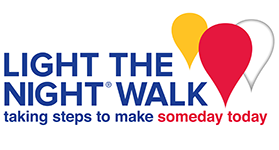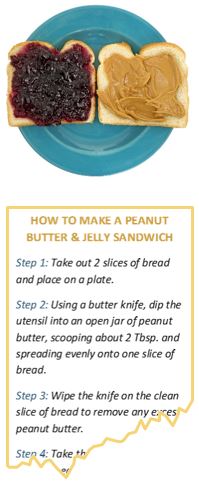 This Thursday, CMBers will participate in the Leukemia and Lymphoma Society’s (LLS) annual Light the Night Walk. My colleagues first joined the walk when I was diagnosed with Hodgkin’s Lymphoma in 2008 as a way to support me in my fight against cancer. The family friendly event starts at dusk on the Boston Common, and the walk is only 2 short loops around the perimeter. During the walk, everyone carries one of three kinds of lanterns: a red lantern shows support, a white lantern represents a survivor, and a gold lantern represents the memory of a lost loved one. It is a truly special event and an inspiring sight.
This Thursday, CMBers will participate in the Leukemia and Lymphoma Society’s (LLS) annual Light the Night Walk. My colleagues first joined the walk when I was diagnosed with Hodgkin’s Lymphoma in 2008 as a way to support me in my fight against cancer. The family friendly event starts at dusk on the Boston Common, and the walk is only 2 short loops around the perimeter. During the walk, everyone carries one of three kinds of lanterns: a red lantern shows support, a white lantern represents a survivor, and a gold lantern represents the memory of a lost loved one. It is a truly special event and an inspiring sight.
We at CMB, like most others, have colleagues and loved ones who have been touched by cancer. Every year, we walk to raise money and awareness so that research can advance. Including this year’s walk, we will have raised $80,000 over the past 8 years. As a cancer survivor, it means so much to me that something as negative as a cancer diagnosis could result in such a positive movement by my colleagues.
LLS funds research with the goal of curing blood cancers, and many of the advances made in blood cancer research can be used to treat other types of cancer. It provides support to patients and their families, and I (as well as countless others) have personally benefited from this research. Due in no small part to the advances made from this very research, I celebrated five years in remission this May and am now considered cured. I was the recipient of a lifesaving stem cell transplant and proton radiation therapy…and these are just two examples of the advanced therapies now available because of LLS and other research organizations. Thanks to them, I will be holding my white lantern high this Thursday. I am one of the lucky ones.
From the LLS website: LLS has invested more than $1 billion in research since our inception. Over that time, survival rates for many blood cancer patients have doubled, tripled and even quadrupled. Moreover, we have learned how to cure certain blood cancers. And many therapies first approved for blood cancers are now helping patients with other types of cancers and serious diseases.
But more than one third of blood cancer patients still do not survive five years after their diagnosis. So more funding is needed to advance more research and to ensure access to treatments to help save more lives.
Catherine Shannon is the Director of Finance at CMB. She’s a two time cancer survivor, and she looks forward to Light the Night Thursday.


 ow do you make a peanut butter and jelly sandwich? It’s a simple task, but using only words to explain the process makes it seem far more complex. Images are easier to interpret and comprehend quickly. Show an image of a PB&J, rather than detailed instructions, to a sandwich-making rookie, and you’ll get your sandwich a lot quicker.The human brain processes visual images 60,000 times faster than any other type of stimuli. The use of images is a powerful and efficient tool to help convey your message. In today’s digital world, not only are people using visual communication more than ever, they’re also communicating better.
ow do you make a peanut butter and jelly sandwich? It’s a simple task, but using only words to explain the process makes it seem far more complex. Images are easier to interpret and comprehend quickly. Show an image of a PB&J, rather than detailed instructions, to a sandwich-making rookie, and you’ll get your sandwich a lot quicker.The human brain processes visual images 60,000 times faster than any other type of stimuli. The use of images is a powerful and efficient tool to help convey your message. In today’s digital world, not only are people using visual communication more than ever, they’re also communicating better. Some visual methods are designed for impact, and are more likely to be remembered and shared, which is something to keep in mind when considering socialization within an organization. Using an infographic or interactive presentation to report results is 30 times more likely to be read and absorbed than plain text. These powerful mediums can convey meaningful results faster and more effectively than a data-heavy report. They strike an attractive balance between content types while telling a compelling and relevant story. Infographics, in particular, can be very engaging, and their versatility makes them a value-add for any industry’s research results.
Some visual methods are designed for impact, and are more likely to be remembered and shared, which is something to keep in mind when considering socialization within an organization. Using an infographic or interactive presentation to report results is 30 times more likely to be read and absorbed than plain text. These powerful mediums can convey meaningful results faster and more effectively than a data-heavy report. They strike an attractive balance between content types while telling a compelling and relevant story. Infographics, in particular, can be very engaging, and their versatility makes them a value-add for any industry’s research results.
 If Superman wants to know what color your underwear is, he doesn’t need to ask. He can see it without your saying a word. He can see it even if you forgot which pair of underwear you chose this morning. And if you don’t want Superman looking at your underwear, too bad! HE CAN SEE IT ANYWAY.
If Superman wants to know what color your underwear is, he doesn’t need to ask. He can see it without your saying a word. He can see it even if you forgot which pair of underwear you chose this morning. And if you don’t want Superman looking at your underwear, too bad! HE CAN SEE IT ANYWAY.  Notice anything about that list? There is only one positive emotion. The rest are all negative—except Surprise, which could swing either way. So unless you’re trying to help
Notice anything about that list? There is only one positive emotion. The rest are all negative—except Surprise, which could swing either way. So unless you’re trying to help 
 After nearly a decade working on highly complex and strategic research projects, I’ve learned the one thing you can count on when dealing with massive amounts of data is Murphy’s Law—anything that can go wrong, will go wrong. No matter how much planning we do (and we take planning very seriously), the nature of market research means there’s bound to be a hiccup or two along the way.One of the best ways to deal with Murphy's Law is to accept that issues will arise but to make sure they don’t get in the way of the end goal—actionable insights. At CMB, our ability to seamlessly execute projects hinges on our capacity to adjust and course correct (when needed) to keep things on track. We put a lot of preparation and time in putting together solid project plans, focusing on business decisions, and conducting stakeholder interviews, but we also place a lot of emphasis on hiring and training strong problem solvers. We do this because we know that even the best laid out plans can still go awry, which is why it's important to manage problems proactively. For example, CMB firmly believes in conducting stakeholder interviews at the beginning of nearly all research engagements. This allows us to proactively re-shape/re-think the questionnaire design based on the information we’re hearing from the stakeholders. This helps prevent getting to the final presentation and delivering insights that are not relevant or useable for the key stakeholders.
After nearly a decade working on highly complex and strategic research projects, I’ve learned the one thing you can count on when dealing with massive amounts of data is Murphy’s Law—anything that can go wrong, will go wrong. No matter how much planning we do (and we take planning very seriously), the nature of market research means there’s bound to be a hiccup or two along the way.One of the best ways to deal with Murphy's Law is to accept that issues will arise but to make sure they don’t get in the way of the end goal—actionable insights. At CMB, our ability to seamlessly execute projects hinges on our capacity to adjust and course correct (when needed) to keep things on track. We put a lot of preparation and time in putting together solid project plans, focusing on business decisions, and conducting stakeholder interviews, but we also place a lot of emphasis on hiring and training strong problem solvers. We do this because we know that even the best laid out plans can still go awry, which is why it's important to manage problems proactively. For example, CMB firmly believes in conducting stakeholder interviews at the beginning of nearly all research engagements. This allows us to proactively re-shape/re-think the questionnaire design based on the information we’re hearing from the stakeholders. This helps prevent getting to the final presentation and delivering insights that are not relevant or useable for the key stakeholders.
 An old friend recently remarked how crazy it is that I’ve been at the same company for over 16 years (and I’m not even that old!). I hadn’t really thought it was a big deal, but among my peers, I’m an outlier. A recent article claims Millennials are putting a “time-limit” on their time at a company—
An old friend recently remarked how crazy it is that I’ve been at the same company for over 16 years (and I’m not even that old!). I hadn’t really thought it was a big deal, but among my peers, I’m an outlier. A recent article claims Millennials are putting a “time-limit” on their time at a company—